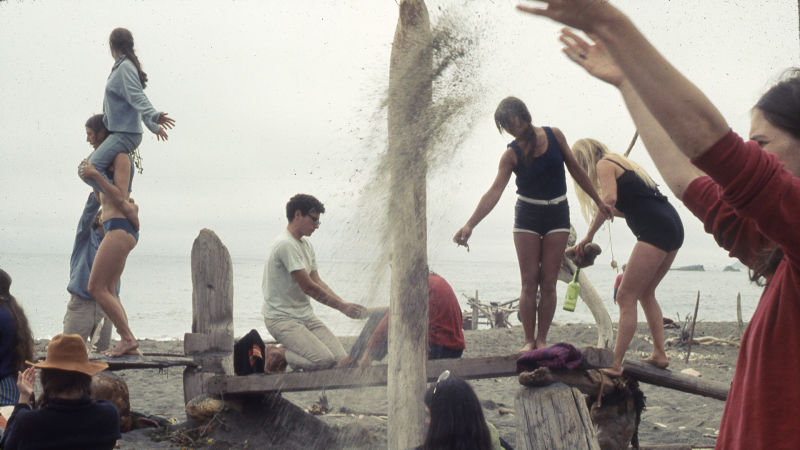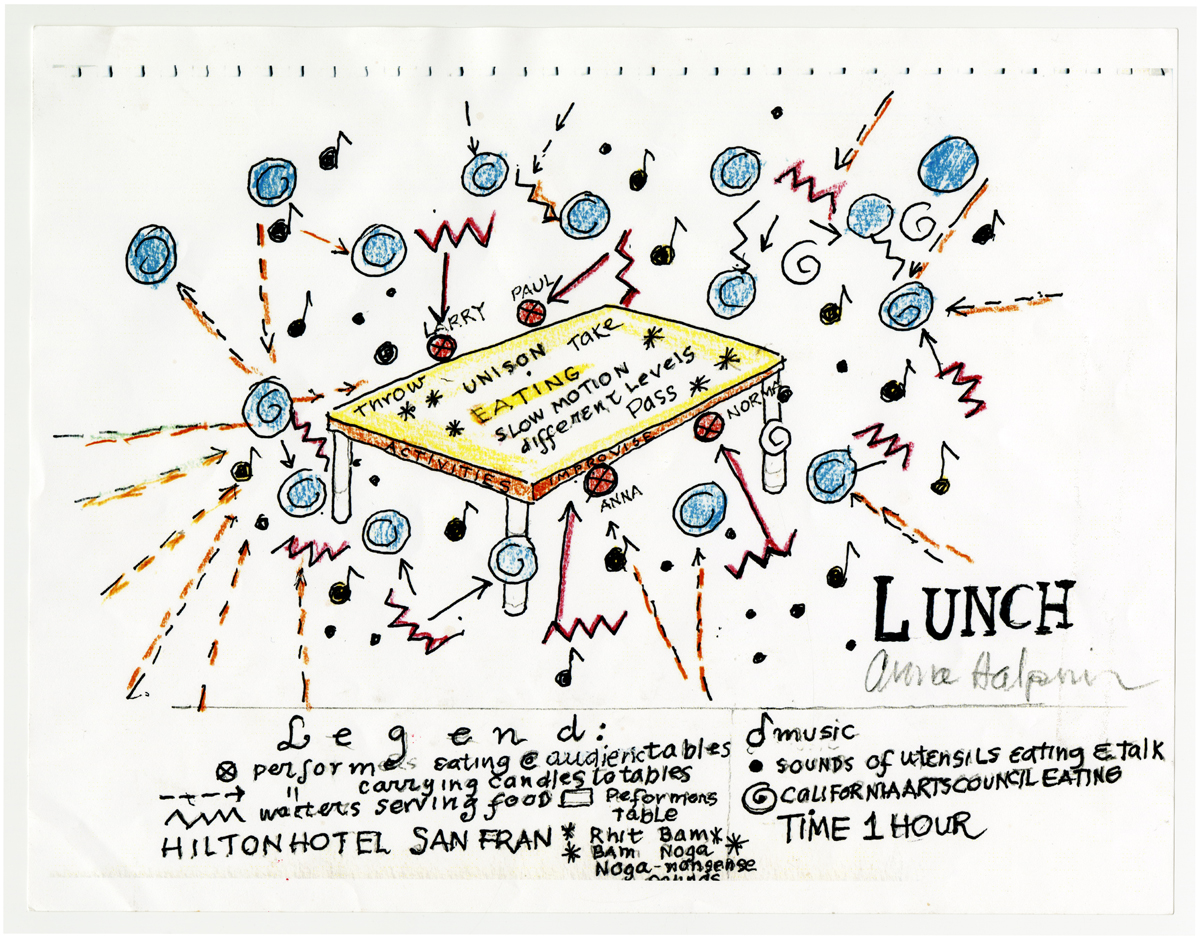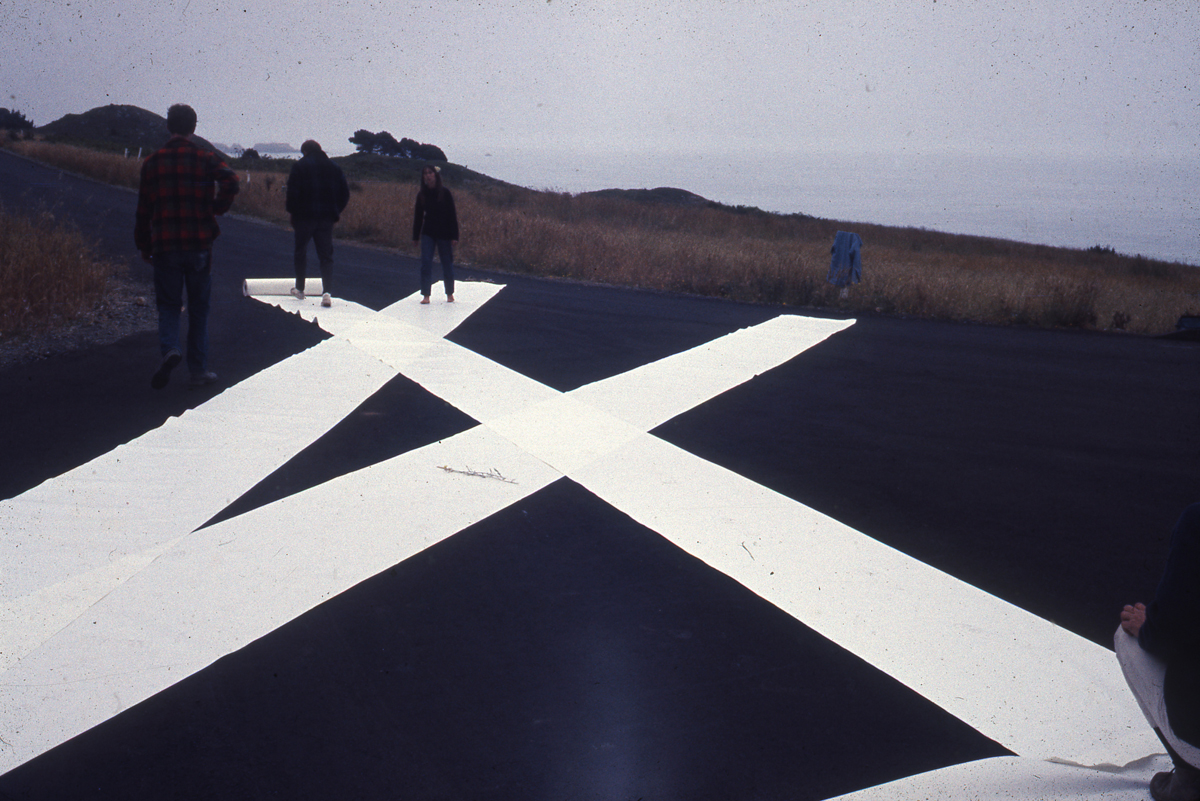In the Venn diagram of dance and architecture, one might think the two circles have very little overlap. But in 1966, dance pioneer Anna Halprin and her husband, landscape architect Lawrence Halprin, sought to intermingle the two in an experimental summer workshop for students of both disciplines. The workshops, led by the couple three times over the next five years, are captured in an exhibition of photographs, ephemera, video and drawings at San Francisco’s California Historical Society. Originally exhibited at the Graham Foundation in Chicago, Experiments in Environment: The Halprin Workshops 1966-1971 brings its cross-disciplinary lesson plan back to the region of its own making.
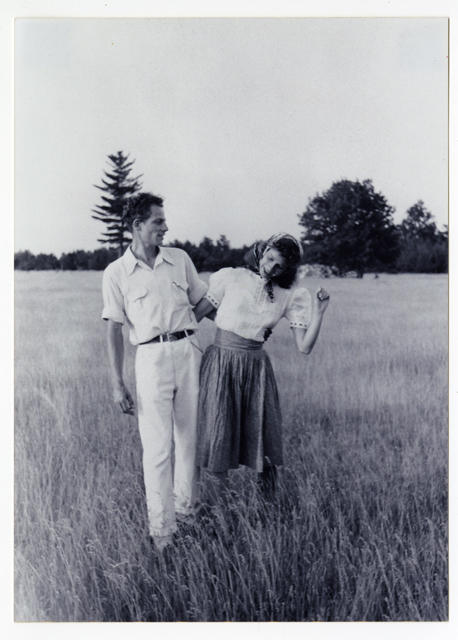
The couple’s “Experiments in Environment” were investigations into urban and natural environments and ways in which bodies move through them. Today the workshop descriptions set off all the buzzword alarms for new-agey, cringeworthy language, but the activities — from blindfolded walking to collective building projects to dances choreographed for city plazas — remain radical.
In fact, the current exhibition at the CHS inspires a not immodest amount of jealousy. While expanding notions of dance, architecture, community and environment, workshop participants had what looks like a hell of a lot of fun.
Those participants for the most part appear to be young, handsome architecture students, budding artists and dancers. A vitrine filled with applications from workshop hopefuls is priceless, including a letter from a 24-year-old Chip Lord, who would become known as one of the founders of the collective Ant Farm, “court jesters of the Bay Area video arts scene” in the 1970s.
“I feel that this experience will make clear personel (sic) concepts which have been clouded or repressed by inexperience and professional school rigidity,” Lord writes in his appeal.
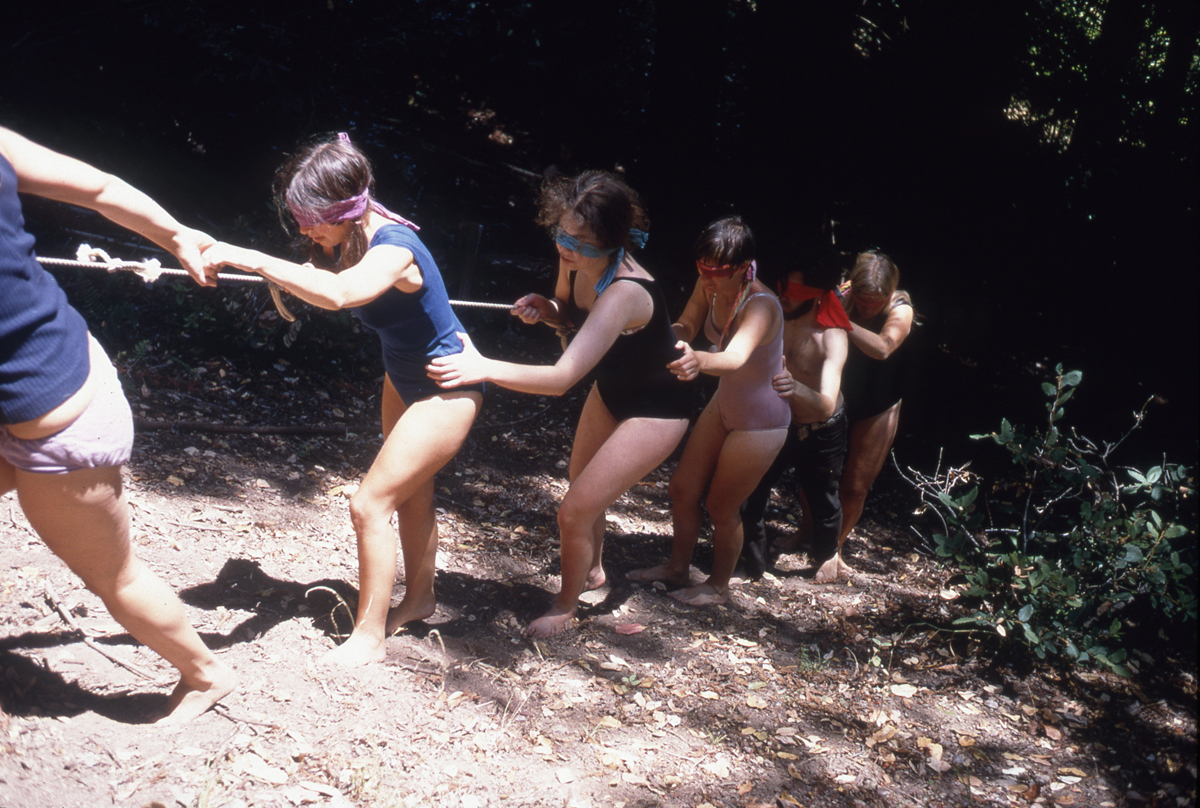
Another letter from a 32-year-old Joan Jonas (who went on to have her own star-studded career, most recently as the United States’ representative at the 2015 Venice Biennale) says, “I hope there is still room.” Based on the exhibition’s list of 1968 workshop participants, she didn’t make the cut.
